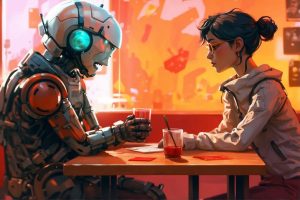Creating anime with historically accurate elements using artificial intelligence (AI) is an intriguing challenge. AI systems, including those developed for generating animations, are becoming increasingly sophisticated, promising new ways to approach content creation. This exploration delves into the capabilities and limitations of AI in producing anime that is not only visually appealing but also historically correct.
Understanding AI in Anime Production
AI's role in anime production is expanding. Traditional animation processes are labor-intensive, requiring significant time and effort from large teams. AI can streamline these processes, automating aspects like coloring, frame interpolation, and even initial character design. This can significantly reduce the production costs, while potentially increasing the efficiency to a point where new episodes can be produced in less time than traditionally required.
Challenges of Historical Accuracy
However, historical accuracy is a more complex challenge. AI systems require extensive data to learn from, and this data must be both comprehensive and precise. For anime set in specific historical contexts, AI needs datasets that include detailed historical records, artifacts, clothing, architecture, and social norms of the period. The availability of such detailed data can vary greatly depending on the historical period and location.
- Data Limitations: Often, the historical data necessary for creating accurate settings and costumes in anime is incomplete or biased. This can lead to inaccuracies in the final product.
- Cultural Sensitivity: AI must be trained to handle historical content with respect, avoiding stereotypes and ensuring cultural sensitivity, which is a significant challenge given the global diversity of anime audiences.
Technological Innovations
Advances in machine learning algorithms have led to more sophisticated generative models, capable of producing detailed and diverse outputs. These models can generate intricate images and sequences that reflect historical settings with a high degree of accuracy, given sufficient training data.
- Generative Adversarial Networks (GANs): These are particularly useful in creating detailed and realistic animations that can adapt historical art styles or generate background settings based on historical photographs.
- Neural Networks and Deep Learning: These technologies allow AI to learn from a vast range of historical data, improving its ability to render historically accurate details in anime.
Economic and Practical Considerations
Incorporating AI into anime production does involve considerations of cost, efficiency, and scalability. While AI can reduce some costs, the initial investment in technology and training data can be substantial. The efficiency gains must be balanced against these costs to determine the practicality for studios of varying sizes.
- Cost: Developing or acquiring a capable AI system requires significant investment, which might be prohibitive for smaller studios.
- Efficiency: Once set up, AI can generate animations faster than traditional methods, potentially lowering episode production times from weeks to days.
Conclusion
AI has the potential to revolutionize how anime is created, offering tools to enhance both the creative process and the business model of anime production. However, achieving historical accuracy is a multifaceted challenge that extends beyond technical capability to include ethical and cultural considerations. As AI technology evolves, it will be essential to maintain a balance between leveraging new tools and respecting the rich histories that anime often seeks to portray. For more insights into how AI is transforming anime, consider exploring ai anime.
